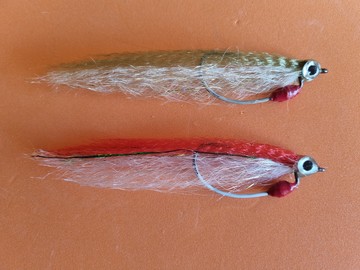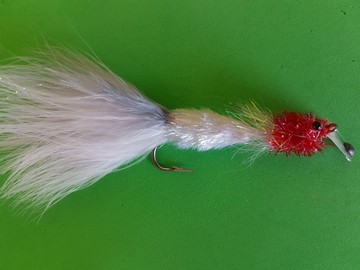Big fish flies – temperate & tropical destinations
{{start}}
We are lucky enough to be based in Gladstone Central Queensland which where the temperate waters of New South Wales and southern Queensland cross over with the tropical waters of the Capricorn Coast and other northern reaches of Australia.
{{end}}
{{+1}}Gladstone – Coastal reefs, rocks and other structure{{-1}}
{{start}}
Mast head and other off shore reefs
Rundle Island (top of Curtis Island)
Facing island reefs including Perl Rocks and Sable Chief
Jenny Lind and Seal rocks
Channel markers
Gear options:
1) General fishing: 15/50 with 30lb braid, 50 flouro and a #4 fastatch clip. This can fish for “big fish” (particularly, barra and King Salmon) using Hard body lures, soft plastics, vibes and bottom bash i.e clip on a bait rig with 50lb paternoster rig and a swivel to connect to the Fashatch.
2) If bottom bashing and trolling is the main fishing method take the two big rods they have 40lb braid and 50lb leaders so can troll with one and have the second one ready to bottom either paternoster or binger directly above the bait.
3) Scrounger outfit: 4-10lb ugly stick with 20lb braid , 25lb flouro, #3 fastach clip. This can be used for scroungers such as snapper, netting cod etc, bream, flathead, grunter and fingermark
4) Barra and King Salmon stinger set up: 15/50 with 30lb braid, 50 fluoro and stinger above #4 fastatch clip.
5) #10weight fly outfit: Intermediate line and 30lb Maxima Ultra green leader plus big fish fly
Don’t forget:
1) If intending to keep table fish take the esky and ice
2) Swivels, lead and hooks for paternoster gigs
3) Hard body lures, soft plastics, vibes
{{end}}

{{+1}}Cania Dam{{-1}}
{{start}}
Cania Dam has a reputation of being an all round fishing venue but in reality for me it is best suited to the warmer months when there is plenty of insect activity.{{end}}

{{+1}}Check list – big fish on fly{{-1}}
{{start}}
To enjoy and be successful in the task of catching big fish on fly a good starting point is to have the right back up gear, fly fishing gear and tools on hand. So here is my "check list" of the items I think you need on hand when targeting big fish on fly.{{end}}

{{+1}}Check lists{{-1}}
{{start}}
One of the most important things I learned in my competition fishing career was the importance of not forgetting to have items on hand that I needed in a competition session.{{end}}

{{+1}}Chatto’s baitfish{{-1}}
{{start}}
I developed this fly to fish both the snaggy rock and coral waters but more recently have found a place for it when fishing the open blue waters and estuary waters of Central Queensland.{{end}}

{{+1}}Low snag fly – jelly prawn{{-1}}
{{start}}
I tie this fly on a #1 or #3/0 unweighted worm hook to which I add my own weight. Even though the natural jelly prawn is only about 4cm long versions bigger than that dont seem to worry bigger fish and I am guessing that they are more tuned into the colour, form and function of the oversized representation of a jelly prawn and see the bigger offering of protein as a bonus.{{end}}

{{+1}}Low snag fly – baitfish{{-1}}
{{start}}
This fly can be cast onto a muddy bank, right into mangroves and onto rock bars and then can be retrieved over and through all manner of structure with an extremely low incidence of getting snagged up.{{end}}

{{+1}}Candy – hardyhead{{-1}}
{{start}}
Even for pelagics such as tuna, mackerel, queenfish & trevally matching the hatch is often critical to success. This fly is my version of a hardy head which is one of the baitfish that particularly tuna and queenfish target in Central Queensland but because of its form and function it's also a good representation of some other small baitfish that these hunters target.{{end}}

{{+1}}Articulated slow roller – Qantas colours{{-1}}
{{start}}
Depending on the water depth this fly can be fished on a floating or fast sink lines but my preference is to stick with a clear intermediate line with a rod length leader and a slow twitchy retrieve with various length pauses.{{end}}














